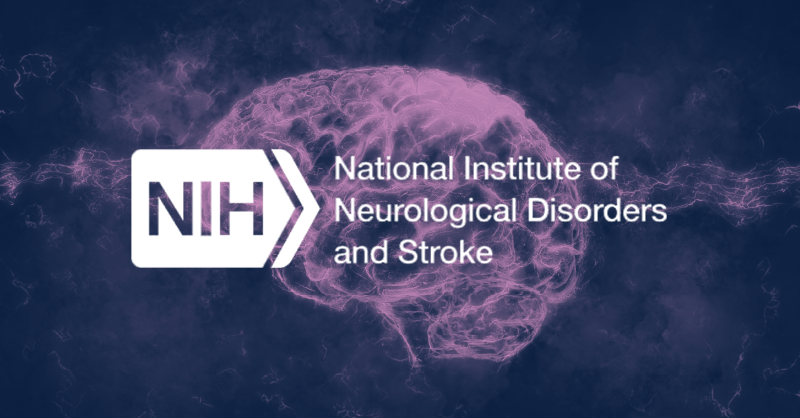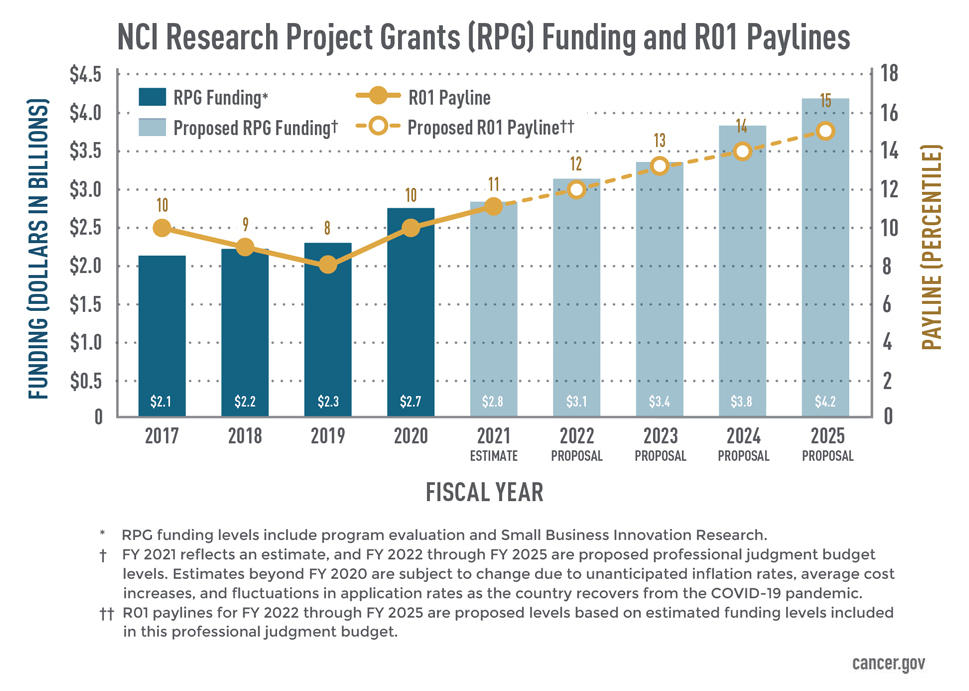Securing funding for groundbreaking research is, in a way, a bit like finding your path through a dense forest; you need clear markers and a good sense of direction. For scientists dedicated to understanding the brain and nervous system, the National Institute of Neurological Disorders and Stroke (NINDS) stands as a vital source of support. As we look ahead to 2024, the much-anticipated NINDS payline becomes a truly significant piece of information, shaping the prospects for countless research projects across the nation. This figure, you know, acts as a critical benchmark, letting researchers know the score they need to hit for their grant applications to have a real shot at getting funded.
Understanding the NINDS payline is more than just knowing a number; it is about grasping the very pulse of neurological research funding. This specific figure tells you, more or less, the funding cutoff for various grant types, such as the widely sought-after R01 grants. It reflects the institute's commitment to advancing knowledge of the brain and nervous system, a mission that NINDS has championed since its establishment in 1950, so too it's almost. The institute, as a matter of fact, is the nation's leading funder in this crucial area, making its funding decisions something many people watch very closely.
The landscape of research funding can feel quite competitive, and knowing the NINDS payline for 2024 helps investigators calibrate their expectations and refine their strategies. It is, in some respects, a transparent way to show how far down the list of reviewed applications NINDS can reach with its available budget. This information, you know, empowers researchers to better prepare their proposals, focusing on the strengths that truly make a difference in the rigorous review process. We will explore what this means for you and your vital work.
Table of Contents
- What is the NINDS Payline, Anyway?
- Why the NINDS Payline Matters for Your Research
- How NINDS Sets Its Payline
- What the 2024 Payline Might Suggest
- Tips for a Stronger NINDS Grant Application
- The Broader Impact of NINDS Funding
- Staying Informed on Payline Updates
- Frequently Asked Questions About NINDS Paylines
What is the NINDS Payline, Anyway?
A payline, you could say, is a score or percentile that acts as a cutoff for grant applications. If your grant proposal receives a score that is at or better than the published payline for its specific grant type (like an R01 or R21), it has a very good chance of receiving funding from NINDS. It is, in essence, a clear threshold that helps manage the sheer volume of high-quality research proposals NINDS receives each funding cycle, so it's almost a necessity.
Think of it like this: when grant applications are reviewed, they get a score based on their scientific merit and potential impact. The lower the score (meaning, the better the review), the higher the chance of funding. The payline, then, is the specific score where NINDS draws the line, determining which applications get the green light. This system, you know, provides a degree of predictability for researchers, allowing them to gauge their chances after their proposal has been evaluated.
It is important to remember that paylines can vary. They often differ by grant mechanism, like whether it is a new R01 application, a renewal, or a different type of grant altogether. Sometimes, too, there are special considerations for early-stage investigators, which might have a slightly more generous payline to encourage new talent in the field. This nuance, as a matter of fact, is something applicants really need to pay attention to.
Why the NINDS Payline Matters for Your Research
For researchers, the NINDS payline is far more than just a number; it is a direct indicator of the funding environment. Knowing this figure helps you understand the competitiveness of the current funding cycle for your particular type of project. If the payline is lower, it means the competition is tougher, and your application needs an even stronger score to be considered for support, so, you know, it's a real challenge.
This information also guides your strategic planning. If you receive your summary statement (the detailed review of your application) and see your score, comparing it to the current payline gives you immediate insight into your funding prospects. This can help you decide whether to revise and resubmit your application, or perhaps explore other funding avenues. It is, arguably, a very practical tool for managing your research pipeline.
Beyond individual applications, the payline reflects the broader investment in neurological research. When the payline is set, it signals how much capacity NINDS has to support new and ongoing studies that advance the understanding of the brain and nervous system. This, too, is almost a barometer for the health of the field, showing where the institute can direct its significant resources to improve human health, as a matter of fact.
How NINDS Sets Its Payline
The process of setting the NINDS payline is quite thoughtful and involves several key elements. First and foremost, the total budget allocated to NINDS by Congress plays a very significant role. The amount of money available directly influences how many grants the institute can fund, and consequently, where the payline can be set, so, you know, it's a big deal.
Another major factor is the number and quality of applications received. If there is a surge in outstanding applications, the payline might need to be adjusted to accommodate the most meritorious science within the available budget. Conversely, if fewer high-scoring applications come in, the payline could potentially move to a more favorable position. This balance, you know, is constantly being evaluated.
NINDS also considers various strategic priorities and specific research areas that require focused investment. Sometimes, certain types of grants or research on particular neurological disorders might receive special attention, which can influence their respective paylines. This ensures, in a way, that critical areas of study receive the necessary support to move forward. The institute, as a matter of fact, works hard to align its funding decisions with its mission to foster comprehensive research.
What the 2024 Payline Might Suggest
While the exact NINDS payline for 2024 is typically announced as the fiscal year progresses, we can make some general observations based on historical trends and the consistent mission of NINDS. The institute, you know, remains committed to funding innovative research on the brain and nervous system, including studies on neurological disorders and stroke. This commitment, in some respects, usually means a steady focus on supporting high-quality science.
It is generally true that funding for neurological research remains a high priority given the immense public health burden of conditions like Alzheimer's, Parkinson's, epilepsy, and stroke. This sustained interest, you know, often translates into a competitive but active funding environment. Researchers should, therefore, anticipate that securing a grant will require a very strong scientific case and a well-prepared application, so it's almost a given.
We can expect NINDS to continue its emphasis on data sharing and the use of common data elements (CDEs) in research. The institute, as a matter of fact, strongly encourages researchers to ensure their data collection is compatible with these CDEs, which helps with broader data integration and sharing. This focus, too, will likely influence how applications are reviewed and prioritized in 2024, making it a point worth considering.
Tips for a Stronger NINDS Grant Application
Given the competitive nature of funding, preparing an outstanding grant application is incredibly important. First, make sure your scientific premise is rock solid and your research questions are clearly defined and impactful. A strong scientific foundation, you know, is the very core of a successful proposal, so it's almost a non-negotiable.
Pay close attention to the review criteria and address each one thoroughly. This means clearly articulating your research plan, demonstrating your expertise and the capabilities of your research team, and outlining your experimental design with precision. It is, arguably, about leaving no stone unturned in presenting your work. The NINDS clinical trials methodology course, as a matter of fact, provides training for early career investigators, showing the institute's dedication to building research capacity.
Seek feedback from mentors and peers before submitting your application. Their insights can help you identify weaknesses or areas that need more clarity. A fresh pair of eyes can spot things you might have overlooked. Also, consider the broader impact of your research; how will it advance the understanding of neurological disorders or lead to better treatments? This kind of forward-thinking, you know, often resonates well with reviewers. Learn more about grant writing tips on our site, and check out this page for more detailed advice on preparing your research proposal.
Furthermore, be realistic about your preliminary data. It needs to be compelling enough to support your proposed research without being so complete that the proposed work seems redundant. It is, in some respects, a delicate balance. Finally, proofread everything meticulously; a professional, error-free application reflects well on your attention to detail and overall professionalism, so, too it's almost a necessity.
The Broader Impact of NINDS Funding
The research supported by NINDS, regardless of the specific payline in any given year, has a profound and lasting impact on human health. As the nation's leading funder of research on the brain and nervous system, NINDS plays a very critical role in advancing our collective understanding of these complex systems. From basic science to translational and clinical research, NINDS is helping move forward the understanding of neurological disorders to improve lives, so, you know, it's a huge effort.
The institute's mission is to conduct, foster, coordinate, and guide research on the causes, prevention, diagnosis, and treatment of neurological disorders and stroke. This broad scope means that funding decisions, influenced by the payline, contribute to a wide array of studies. These studies, you know, range from exploring fundamental brain mechanisms to developing new therapies for devastating conditions. It is, arguably, a truly comprehensive approach.
The outcomes of NINDS-funded research can be seen in new diagnostic tools, improved treatments, and a deeper appreciation of how the brain works. For instance, since 1977, NINDS has sponsored numerous phase 3 trials to evaluate treatments, demonstrating its long-term commitment to clinical advancements. Every grant awarded, even those just making the payline, contributes to this larger scientific endeavor, pushing the boundaries of what we know and what we can do for patients, as a matter of fact.
Staying Informed on Payline Updates
For anyone involved in neurological research, staying current with NINDS payline announcements is incredibly important. These figures can change throughout the fiscal year as budgets are finalized or as the institute makes strategic adjustments. The best way to get the most accurate and up-to-date information is directly from the source, so it's almost a given.
NINDS regularly posts updates on its official website, often in the grants and funding section. They might also share information through newsletters or specific program announcements. Checking these official channels frequently will ensure you have the latest figures and any accompanying guidance. This proactive approach, you know, can save you a lot of guesswork and help you plan your next steps effectively.
You can usually find detailed information, including paylines for different grant types and any special considerations, on the NINDS website. Visiting the official NINDS funding page is always a good idea. Staying connected to these official updates is, in some respects, a key part of being a successful grant applicant in this competitive field.
Frequently Asked Questions About NINDS Paylines
What does it mean if my grant score is "just above" the payline?
If your grant score is just above the payline, it typically means your application did not meet the funding threshold for that specific cycle. While this can be disappointing, it often indicates that your proposal was still highly regarded by reviewers. You know, this situation frequently leads to a strong recommendation to revise and resubmit your application, addressing any critiques from the summary statement to push your score even lower.
Do paylines change throughout the year?
Yes, paylines can, as a matter of fact, change throughout the fiscal year. NINDS often announces interim paylines early in the year, which are then updated as the budget becomes clearer and as more applications are reviewed. It is, in some respects, a dynamic process, so staying updated by checking the official NINDS website regularly is very important for applicants.
Are there different paylines for different types of grants?
Absolutely, there are typically different paylines for various grant types, like R01s, R21s, and K awards, among others. Sometimes, too, there are specific paylines for new investigators or for particular research initiatives. Each grant mechanism has its own funding considerations and, you know, its own competitive landscape, which influences its specific payline. This means you need to check the relevant payline for the grant type you are applying for.
So, as we consider the NINDS payline for 2024, remember that it is a tool to help you understand the funding landscape and prepare your best possible application. The institute's dedication to advancing neurological research remains strong, offering incredible opportunities for scientists to contribute to critical discoveries. Keep an eye on official announcements, and keep pushing the boundaries of science.



Detail Author:
- Name : Dr. Jayce Bashirian I
- Username : vcartwright
- Email : amiya63@carroll.info
- Birthdate : 2007-03-19
- Address : 716 Prohaska Camp Apt. 667 Darylfurt, TN 59224-0247
- Phone : 1-813-798-7942
- Company : Barrows Group
- Job : CTO
- Bio : Possimus quas quas at et reprehenderit. Illum sit facere animi praesentium perspiciatis. Nihil voluptatum blanditiis alias amet. Aut voluptate nemo ut animi ut quo dolores.
Socials
facebook:
- url : https://facebook.com/norbertjast
- username : norbertjast
- bio : Enim nobis ullam totam reprehenderit aperiam et.
- followers : 399
- following : 1248
instagram:
- url : https://instagram.com/norbert5769
- username : norbert5769
- bio : Accusantium nihil soluta commodi eligendi. Dolores quo qui officiis quasi.
- followers : 477
- following : 698
twitter:
- url : https://twitter.com/jast1984
- username : jast1984
- bio : Aut dolorem et officia necessitatibus minus libero voluptatem. Ex autem cumque molestiae sequi sapiente explicabo et.
- followers : 2964
- following : 286
linkedin:
- url : https://linkedin.com/in/jastn
- username : jastn
- bio : Expedita inventore labore repudiandae dolores ut.
- followers : 540
- following : 368